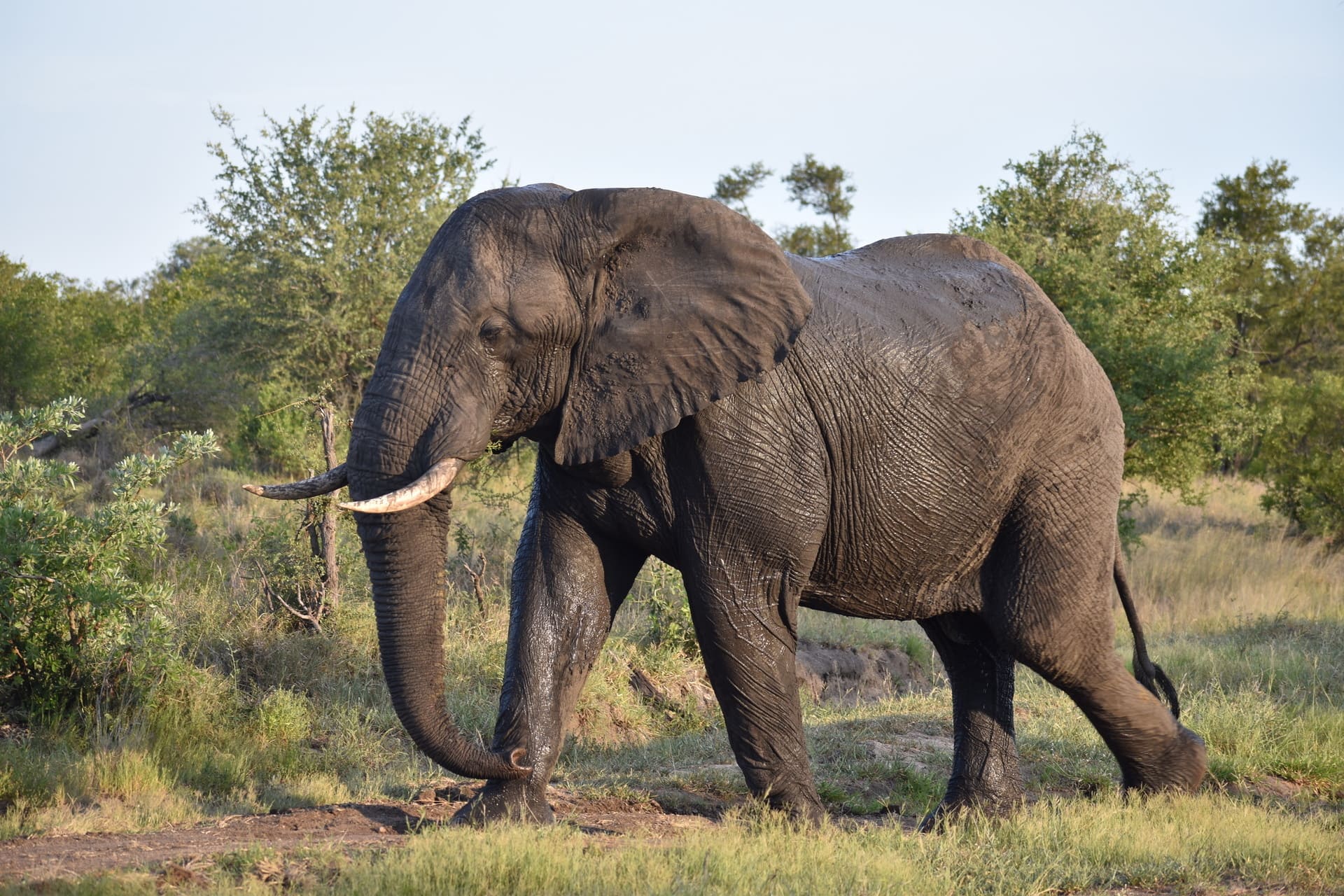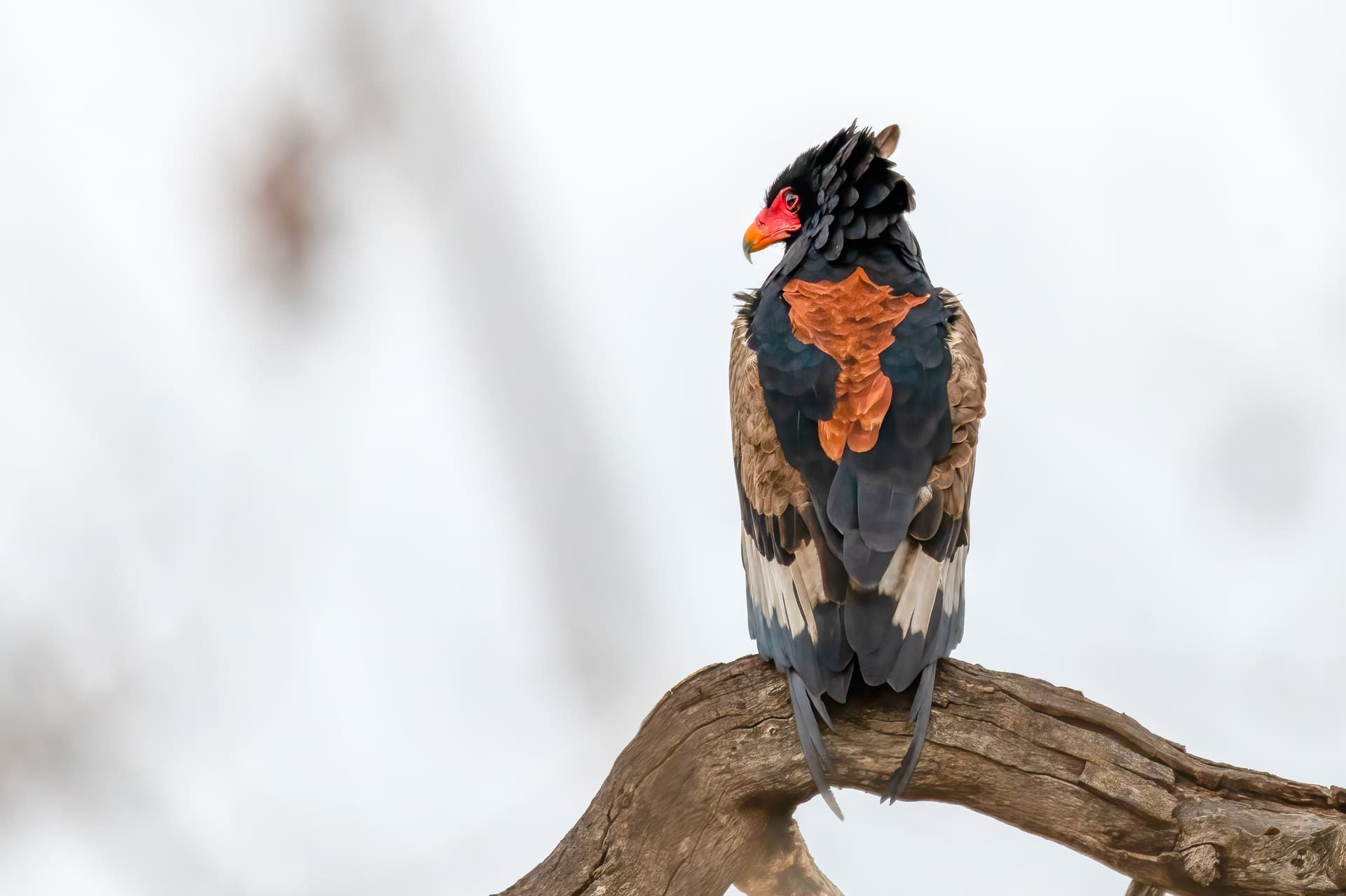
Returning to the bush is like reading your favourite book again. Each time, you notice underlying storylines, you get to know the psyche of the characters better, and you notice what the characters don’t say.
Your first safari was an unbelievable adrenaline-pumping experience. You gasped at your first leopard sighting, gawked at the mighty elephants gracefully strolling past, and took a deep breath as you gazed into the sunset during the drinks stop.
But from your second safari, you start to notice subtler details and moments.
 Despite their rather impressive size, elephants often hide in plain sight!
Despite their rather impressive size, elephants often hide in plain sight!
The Silence Between Sounds
It takes time to adjust your ears to listen to the bush. At first, you noticed the big sounds: the grunts and moans of a lion, the snorts of an elephant, the iconic call of the African fish eagle, the choir of woodland kingfishers, and the (eerie) clucks of a hyena.
But when you return, that’s when you notice the smaller moments. The whisper of the wind, the rustle in the grass, the scurry of the squirrels, and the faint bleats and bellows of antelope. You tune into the different sounds and calls of animals and learn from your guide about what each could mean.
It might sound like an oxymoron, but you can hear the silence. And you appreciate it.
That Leopard
Sabi Sand might as well change its name to Leopard Land! The majority of our guests have one goal: see the famously-elusive leopard! You’ll likely (with the help of your guide) spot one lounging in the grass, in a tree, or casually strolling past the vehicle.
When you return home, the yearning goes deeper. You miss the Sabi Sand and check in on Instagram religiously. You get to know the leopards so that when you want to return, you want to see that specific leopard.
You grew fond of Kuchava and are so happy to see her newest cub has earned her name, Rhulani. You want to see the gigantic Tortoise Pan male as he rightfully protects his territory.
The Guide and Tracker Dance
Returning safari-goers will understand: the first time your guide and tracker stopped in the middle of the wilderness and jumped out of the vehicle to track a leopard’s spoor, you were slightly anxious.
But then you watch them to try and see what they see – how do they find the spoor when it disappears in the grass? The duo communicate silently with hand signals and nods as they find and interpret subtle cues. The choreography of this dance often goes unnoticed on your first safari.
You Suddenly Notice Birds
Initially, you took note of the blue and purple bird perched on a wire, or the flash of blue darting towards the water. It’s beautiful, but fleeting.
As you go on safari more often, you start to notice the lilac-breasted rollers. You actively look out for the woodland kingfishers because you can hear them, so they must be close. And ah, the thrill when you spot the distinctive bateleur eagle!
 Even non-birders are excited to see these rare predators – the bateleur eagle
Even non-birders are excited to see these rare predators – the bateleur eagle
You Get Into Rhythm
On your first safari, everything feels a bit unpredictable. Almost like the day has a stop-start approach. From the second time on safari, you start to ease into the rhythm.
It’s a slower pace, and everything just flows effortlessly. From racing from sighting to sighting, to following the natural pace of the wild.
That Feeling of Belonging
Entering the bush as a first-timer feels like stepping into another realm. But when you return, you experience an inner shift. The bush does not feel foreign anymore.
You know the difference between a leopard and a cheetah, between a springbok and nyala. You remember the scent of the potato bush. You feel like you are coming home.
 Relax and unwind. Time does not exist in the Sabi Sand.
Relax and unwind. Time does not exist in the Sabi Sand.
A Reunion with the Wild
The bush is calling you, it’s pulling you. The leopard cubs are learning to hunt while lion prides are growing. Let's plan your return trip to the Sabi Sand. Your place at Chitwa Chitwa is ready.